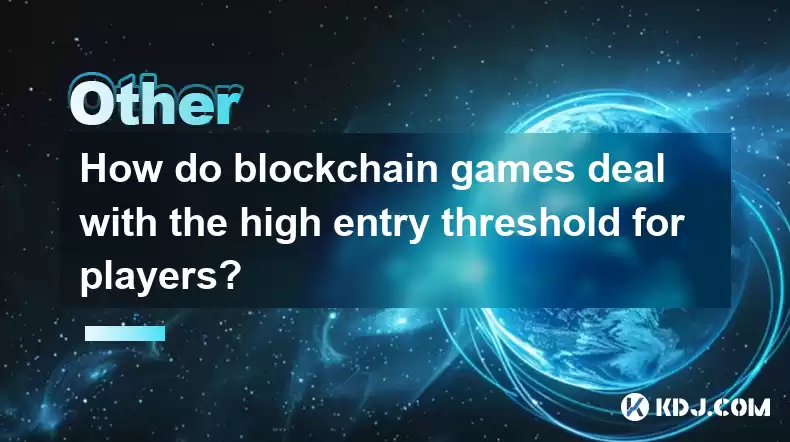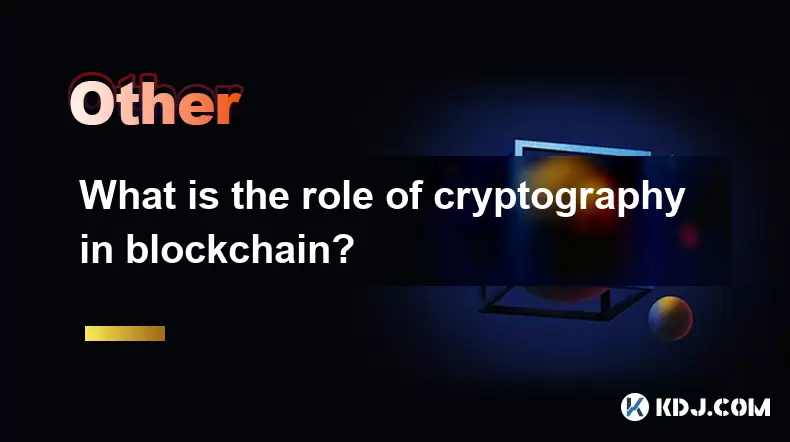-
 Bitcoin
Bitcoin $114000
0.14% -
 Ethereum
Ethereum $3493
-0.55% -
 XRP
XRP $2.877
-2.40% -
 Tether USDt
Tether USDt $1.000
0.04% -
 BNB
BNB $749.6
-1.00% -
 Solana
Solana $161.8
-1.73% -
 USDC
USDC $0.0000
0.01% -
 TRON
TRON $0.3261
-0.10% -
 Dogecoin
Dogecoin $0.1978
-1.14% -
 Cardano
Cardano $0.7237
1.01% -
 Hyperliquid
Hyperliquid $38.91
1.50% -
 Sui
Sui $3.466
1.01% -
 Stellar
Stellar $0.3856
0.86% -
 Chainlink
Chainlink $16.15
0.62% -
 Bitcoin Cash
Bitcoin Cash $538.9
0.49% -
 Hedera
Hedera $0.2436
2.25% -
 Ethena USDe
Ethena USDe $1.001
0.05% -
 Avalanche
Avalanche $21.36
-0.86% -
 Toncoin
Toncoin $3.661
2.11% -
 Litecoin
Litecoin $109.1
1.99% -
 UNUS SED LEO
UNUS SED LEO $8.964
0.01% -
 Shiba Inu
Shiba Inu $0.00001220
0.67% -
 Polkadot
Polkadot $3.604
1.10% -
 Uniswap
Uniswap $9.124
0.97% -
 Monero
Monero $297.4
1.31% -
 Dai
Dai $1.000
0.02% -
 Bitget Token
Bitget Token $4.311
0.35% -
 Pepe
Pepe $0.00001048
0.49% -
 Cronos
Cronos $0.1319
-0.50% -
 Aave
Aave $257.9
1.11%
How do blockchain games deal with the high entry threshold for players?
Blockchain games lower entry barriers with simplified tech explanations, fiat on-ramps, tutorials, free-to-play models, community support, user-friendly interfaces, and starter incentives.
Apr 14, 2025 at 06:29 pm

Blockchain games, while innovative and exciting, often face the challenge of a high entry threshold for new players. This can stem from various factors such as the need for understanding complex blockchain technology, the requirement to possess cryptocurrencies, and the sometimes steep learning curve associated with game mechanics. To address these issues, developers and game designers have implemented several strategies to make their games more accessible and appealing to a broader audience.
Simplifying Blockchain Concepts
One of the primary barriers to entry for many potential players is the complexity of blockchain technology itself. To mitigate this, game developers focus on simplifying blockchain concepts within the game's user interface and educational materials. They often use intuitive analogies and straightforward language to explain how blockchain works and its relevance to the game. For instance, instead of using technical jargon like "decentralized ledgers," they might describe it as a "secure, shared database" that players can trust.
Integrating Fiat On-Ramps
Another significant barrier is the requirement for players to own cryptocurrencies to participate in blockchain games. To address this, many games now offer fiat on-ramps, allowing players to purchase cryptocurrencies directly within the game using traditional currencies like USD or EUR. This integration makes it easier for newcomers who may not have prior experience with cryptocurrencies. The process typically involves:
- Selecting the desired cryptocurrency within the game's marketplace.
- Choosing a payment method, such as a credit card or bank transfer.
- Completing the transaction through a partnered payment gateway.
- Receiving the cryptocurrency directly into their in-game wallet.
Offering Tutorials and Guides
To help players overcome the learning curve, blockchain games often provide comprehensive tutorials and guides. These resources are designed to walk players through the game's mechanics, from basic gameplay to advanced strategies. Tutorials might include:
- Interactive walkthroughs that guide players through their first few games.
- Video guides that demonstrate key gameplay elements and strategies.
- In-game help centers where players can access FAQs and detailed explanations of game features.
By offering these resources, developers ensure that players can learn at their own pace and feel supported as they explore the game.
Implementing Free-to-Play Models
To further lower the entry threshold, many blockchain games adopt free-to-play models. These models allow players to start playing without any initial investment, which can be particularly appealing to those hesitant to spend money on a new game. Free-to-play games often generate revenue through in-game purchases or by offering premium features that enhance the gaming experience. This approach not only makes the game more accessible but also gives players the opportunity to try the game before deciding to invest more.
Leveraging Community Support
Another effective strategy for reducing the entry threshold is leveraging community support. Many blockchain games foster vibrant communities where experienced players help newcomers. This can take the form of:
- Dedicated forums or Discord channels where players can ask questions and share tips.
- In-game mentorship programs that pair new players with veterans.
- Community-driven content, such as player-created guides and tutorials, that provide diverse perspectives and insights into the game.
By building a supportive community, developers create an environment where new players feel welcomed and supported, which can significantly enhance their gaming experience.
Utilizing User-Friendly Interfaces
The user interface (UI) of a blockchain game plays a crucial role in its accessibility. Developers strive to create user-friendly interfaces that are intuitive and easy to navigate. This involves:
- Designing clear and concise menus that guide players through different game features.
- Using visual cues and tooltips to explain complex elements without overwhelming the player.
- Ensuring that the UI is responsive and works well across different devices, from PCs to mobile phones.
A well-designed UI can greatly reduce the learning curve and make the game more enjoyable for players of all skill levels.
Offering Starter Packs and Incentives
To further encourage new players to join, many blockchain games offer starter packs and incentives. These can include:
- Free in-game items or cryptocurrencies to help players get started.
- Bonus rewards for completing initial quests or tutorials.
- Special promotions or discounts for new players during their first few weeks of gameplay.
These incentives not only lower the financial barrier to entry but also provide a sense of immediate value and engagement for new players.
FAQs
Q: Are there any risks associated with using fiat on-ramps in blockchain games?
A: While fiat on-ramps make it easier to enter the game, there are potential risks such as transaction fees, currency conversion rates, and the security of the payment gateway. Players should always use trusted platforms and be aware of any associated costs.
Q: How can players ensure they are joining a supportive community for a blockchain game?
A: Players can look for games with active forums, Discord channels, or social media groups. Checking for community-driven content like guides and player testimonials can also give insights into the community's supportiveness.
Q: What should players consider when choosing a free-to-play blockchain game?
A: Players should consider the game's monetization model, the value of in-game purchases, and whether the free version offers a satisfying gameplay experience. It's also important to check if the game has a strong community and ongoing support from developers.
Q: How important is the user interface in determining the accessibility of a blockchain game?
A: The user interface is crucial for accessibility as it directly impacts how easily players can navigate and understand the game. A well-designed UI can significantly reduce the learning curve and make the game more enjoyable for new players.
Disclaimer:info@kdj.com
The information provided is not trading advice. kdj.com does not assume any responsibility for any investments made based on the information provided in this article. Cryptocurrencies are highly volatile and it is highly recommended that you invest with caution after thorough research!
If you believe that the content used on this website infringes your copyright, please contact us immediately (info@kdj.com) and we will delete it promptly.
- Solana's Next Chapter: SOL Prediction and the SOLF Token Buzz
- 2025-08-03 18:30:16
- Token Chart Buzz: Analysts Eye Potential Price Increase with Mutuum Finance (MUTM)
- 2025-08-03 18:30:16
- Dogecoin, Utility Tokens, and Whales: A New Era for Crypto?
- 2025-08-03 19:10:16
- Small Cap Crypto Gem Alert: Ruvi AI's 100x Potential Shakes Up Solana, Ethereum, and XRP
- 2025-08-03 19:10:16
- Cryptos, Scarcity, and Beta Games: A Troller Cat's Perspective on the 2025 Meme Coin Mania
- 2025-08-03 19:15:16
- Aavegotchi Goes Base: A New Era for Gamified NFTs?
- 2025-08-03 19:15:16
Related knowledge

What is the difference between on-chain and off-chain transactions?
Aug 02,2025 at 04:22pm
Understanding On-Chain TransactionsOn-chain transactions refer to digital asset transfers that are recorded directly on a blockchain ledger. These tra...

What is a node's role in a blockchain network?
Aug 03,2025 at 03:16pm
Understanding the Function of a Node in a Blockchain NetworkA node is a fundamental component of any blockchain network, acting as a participant that ...

What is the double-spending problem and how does blockchain prevent it?
Aug 02,2025 at 01:07pm
Understanding the Double-Spending ProblemThe double-spending problem is a fundamental challenge in digital currency systems where the same digital tok...

What is the difference between a blockchain and a database?
Aug 01,2025 at 09:36pm
Understanding the Core Structure of a BlockchainA blockchain is a decentralized digital ledger that records data in a series of immutable blocks linke...

How does blockchain handle scalability?
Aug 02,2025 at 02:58pm
Understanding Blockchain Scalability ChallengesBlockchain scalability refers to a network's ability to handle an increasing volume of transactions wit...

What is the role of cryptography in blockchain?
Aug 03,2025 at 03:42pm
Understanding the Foundation of Blockchain SecurityCryptography is the cornerstone of blockchain technology, providing the essential tools to ensure d...

What is the difference between on-chain and off-chain transactions?
Aug 02,2025 at 04:22pm
Understanding On-Chain TransactionsOn-chain transactions refer to digital asset transfers that are recorded directly on a blockchain ledger. These tra...

What is a node's role in a blockchain network?
Aug 03,2025 at 03:16pm
Understanding the Function of a Node in a Blockchain NetworkA node is a fundamental component of any blockchain network, acting as a participant that ...

What is the double-spending problem and how does blockchain prevent it?
Aug 02,2025 at 01:07pm
Understanding the Double-Spending ProblemThe double-spending problem is a fundamental challenge in digital currency systems where the same digital tok...

What is the difference between a blockchain and a database?
Aug 01,2025 at 09:36pm
Understanding the Core Structure of a BlockchainA blockchain is a decentralized digital ledger that records data in a series of immutable blocks linke...

How does blockchain handle scalability?
Aug 02,2025 at 02:58pm
Understanding Blockchain Scalability ChallengesBlockchain scalability refers to a network's ability to handle an increasing volume of transactions wit...

What is the role of cryptography in blockchain?
Aug 03,2025 at 03:42pm
Understanding the Foundation of Blockchain SecurityCryptography is the cornerstone of blockchain technology, providing the essential tools to ensure d...
See all articles

























































































